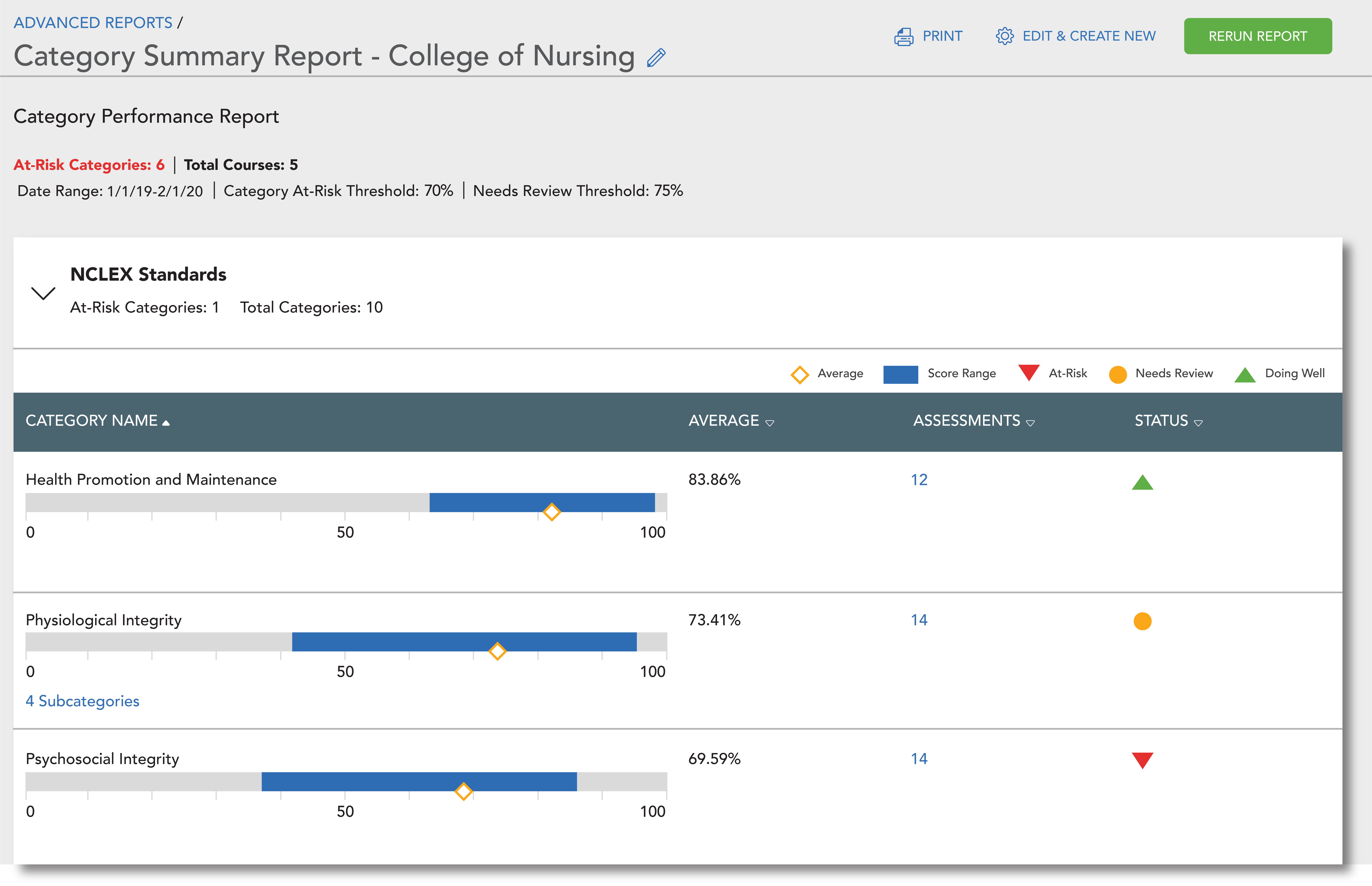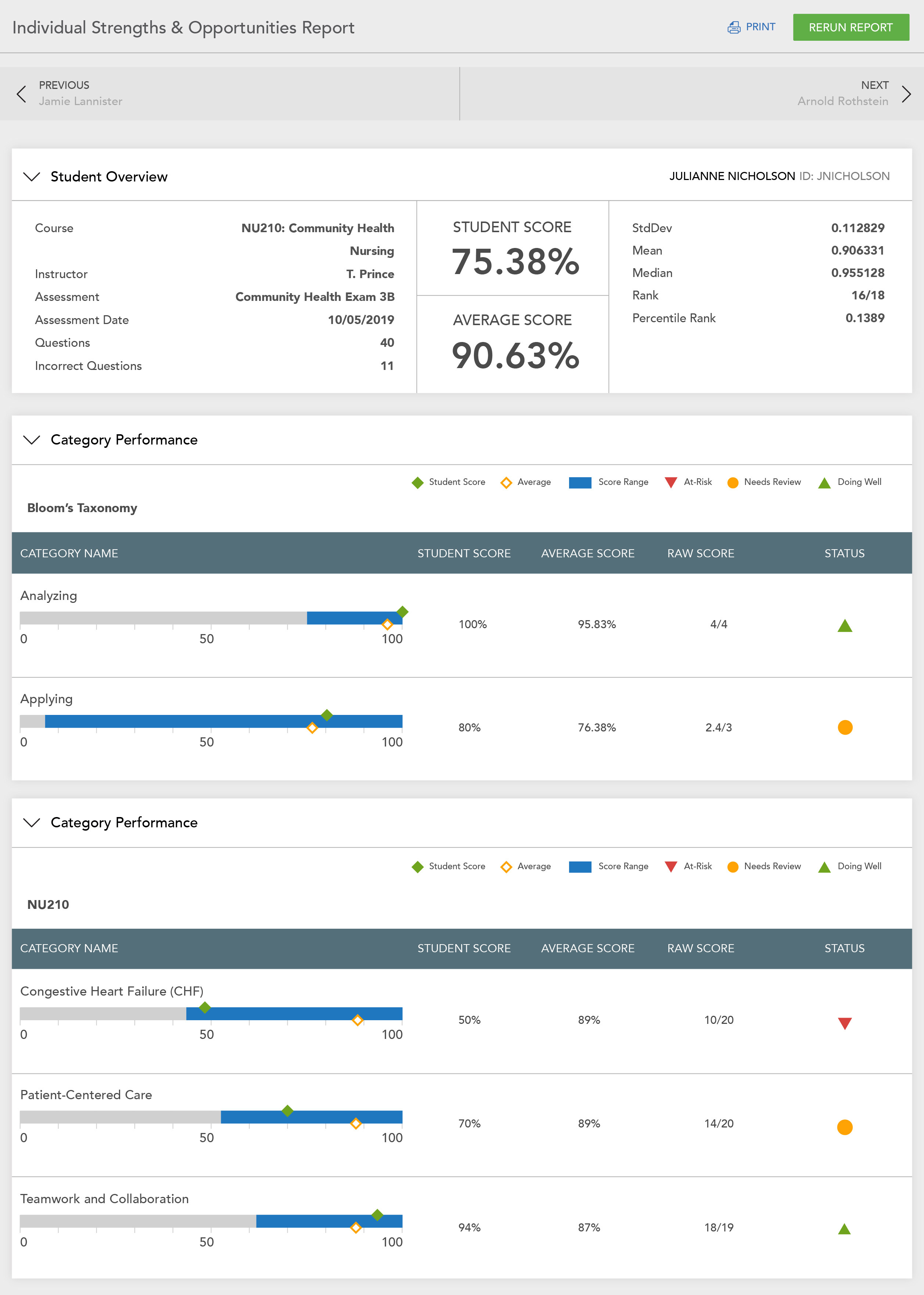At Turnitin, we’re bringing together products that support the entire student learning journey, from drafting essays and providing similarity reports to delivering formative assessments and ensuring accurate final summative exams. These tools include those that help students as they write, checkpoints to ensure that student writing upholds academic integrity, and software that makes grading more effective, efficient, and formative. Turnitin’s product line promotes best practices in pedagogy with the intention of serving educators and students alike.
Solutions like ExamSoft enable educators to match digital assessment outcomes to accreditation standards, licensure preparedness, and teaching effectiveness. Examsoft also has a unique feature called category tagging that powers all of the above.
Category tagging is a feature for computer-based tests that allows educators to connect exam items and rubric areas to text-based categories. These categories are completely customizable to accommodate a range of academic subjects and assessment types— for instance, measuring student knowledge in specific areas of anatomy and physiology or even via Bloom’s taxonomy, gaining insights into students’ ability to analyze or apply concepts. Reports can encompass a course or an entire program to help educators. In sum, category tagging enables instructors and administrators to see what it is students know or don’t know within a course or an entire program and to what level students understand concepts.

This is important because institutions and programs are often measured by test results and category tagging helps educators understand how prepared students are for their next steps in learning and testing. In their research paper entitled “Predicting success in nursing programs,” Herrera and Blair from Arizona State University state, “It is important that nursing schools be able to forecast, with confidence, the probability that a student will successfully complete a nursing program and ultimately pass the National Council Licensure Examination-Registered Nurse (NCLEX-RN®)” (2015, p. 1). ExamSoft’s category tagging helps provide the data to predict student success for licensure exams like Next Generation NCLEX.
Additionally, for law schools, the popular ranking system of U.S. World & News Report counts placement, which includes student bar passage rate, as 26% of a law school’s overall ranking score. Understanding how prepared students are for their next steps is critical not only for individual students but for an institution’s reputation. For administrators, category tagging data ensures insights into programmatic outcomes and accreditation standards; this allows opportunity, too, to strengthen curriculum where needed.
Instructors who teach multiple sections of a course can view performance data across all of their classes to measure teaching effectiveness. By tagging items to instruction methods, instructors can also understand which methodologies are most effective. While intuition can back many instruction decisions, data from category tagging can bolster teaching.

In turn, category tagging provides students with meaningful feedback, helping them understand where they excel and where they have learning gaps, transforming assessments into opportunities throughout their learning journey. Categories can track competencies and skills not only focused on knowledge, but also soft skills like communication and professionalism.
Assessment and testing can often feel like an endpoint, when really it is an intersection filled with information for administrators, instructors, and students alike. Understanding this data is critical to next steps and when necessary, educator intervention; when these actions are taken, the institution, teaching efficacy, and student learning all benefit.




